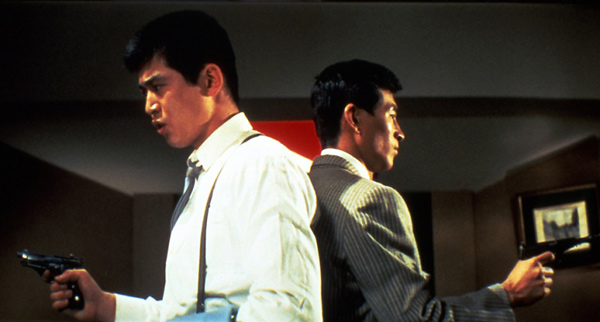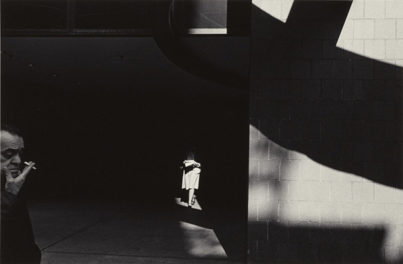
Lone-warriors: Ryan Gosling in Drive, Lee Marvin in Point Blank, Alain Delon in Le Samouraï
Amid the constant churn of gangster movies that get released each year, it’s refreshing when well-thought-out films like Drive (2011) come along. After watching it a couple years ago, I noticed that most of the guys coming out of the theater were stone quiet, attempting their own version of Ryan Gosling stoicism, gazing around for something “epic” to do, even if it just meant throwing a hot dog at somebody. You can count the number of times a movie can make you feel like that on your fingertips (or on the nacho cheese stains on your shirt). Immediately, I thought about how much Drive owed in style and tone to some of the great crime films of the 1960s, two neo-noirs in particular: The American Point Blank (1967) with Lee Marvin and the French-Italian Le Samouraï (1967) with Alain Delon.
The plotlines of these kinds of films vary, of course: In Drive, a getaway driver gets in for more than he bargained for; in Point Blank, a thief does whatever it takes to get the $93,000 owed to him; and in Le Samouraï, a hitman evades police while a new contract is forced on him. However, many of the ideas and character traits they explore remain constant: a criminal with a moral code, a perfectionist, working alone, outnumbered, double-crossed, out for vengeance, relentless, in and out of nightclubs, shoving love interests away, looking for answers, knocking off the bad guys one by one in mythic (almost super-human) fashion, all while keeping cool. More than a few favorites fit some version of this theme, which is why I was eager to watch a much cited cult film like Tokyo Drifter (1966).
“Seijun Suzuki’s films recall the best, corrosively anarchic work of Tex Avery and the celebration of cinema as aesthetic play.” —Phil Hardy, The Overlook Film Encyclopedia: The Gangster Film
I must admit, I’m still on a long quest to expand my Japanese film experience, and was curious to see how a director like Seijun Suzuki handled the gangster genre in 1960s Tokyo. Specifically, how different it could be from a film like Le Samouraï, credited for transplanting the “samurai” ethic and philosophy to the mean streets of Paris. My expectations were way off, in the best way.
Having finally watched and enjoyed Tokyo Drifter, all I can say is, for those of you that have not taken a Japanese B-movie ride before or never been shot at with hot-pink, you’re about to get smacked in the face with a bucket of WTF paint. Think of it as a yakuza-Pop fever-dream after a night of too much ramen. Suzuki unleashes color and disorients on almost every frame, from Surrealist set design to a narrative that more resembles a Pollock painting. Tokyo Drifter drifts back and forth from winking at the audience in scenes easy to label as spoof or self-mockery to genuine attempts at avant-garde, experimental filmmaking.

Tetsuya “the Phoenix” (Tetsuya Watari) and Tatsuzo “the Viper” (Tamio Kawaji) in a still from Tokyo Drifter
The painterly references one can make about Suzuki’s visual onslaught go on forever, but what I find equally stands out is the way the film depicts the hero, a yakuza enforcer known as Tetsuya “the Phoenix” (played by Tetsuya Watari). After Tetsuya’s gang gets disbanded by his boss, he is eager for a clean start in life, but finds that old foes and allegiances refuse to let go, and is forced to resort to kabuki-style gang shootouts to get out of each new predicament. Though, even as the body count rises, the much feared Tetsuya seems less a killer and more a good kid on the run—wearing his powder-blue suit, singing his own theme song, waking up to life’s harsh truths, with a soft spot for father figures and the occasional bro-mance. Tetsuya may even save the girl at the end, but all he wants is to be the “Tokyo Drifter.” We never really learn what a drifter is exactly, and it never really matters.

Still from Tokyo Drifter
Tokyo Drifter screens at the Getty Center this Saturday, April 27, as part of the In Tokyo film series, in conjunction with the exhibition Japan’s Modern Divide: The Photographs of Hiroshi Hamaya and Kansuke Yamamoto. With directors Akira Kurosawa and Yasujiro Ozu featured last weekend, and Kenji Mizoguchi and Seijun Suzuki among those featured this weekend, this series has been the best excuse to get caught up on the sensory goldmine that is Japanese cinema.




fascinating and articulate critique! I’m sold.
Thank you. Tokyo Drifter is pure fun… and exponentially so, the bigger the screen.